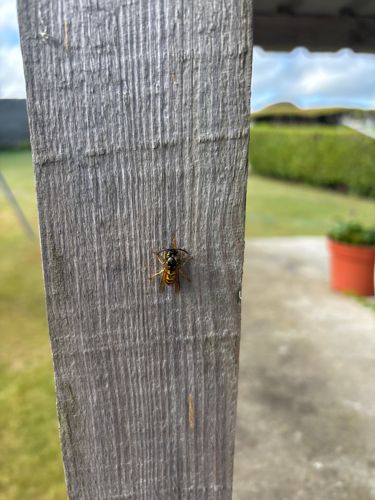Common Wasp
Scientific Name: Vespula vulgaris
Order & Family: Hymenoptera, Vespidae
Size: Workers typically range from 12-17 mm (0.5-0.7 inches) in length, while queens are larger, around 18-20 mm (0.7-0.8 inches).

Natural Habitat
Common wasps are widespread and can be found in various habitats, including urban areas, gardens, woodlands, and agricultural fields. They commonly build nests in sheltered locations such as in walls, lofts, tree hollows, and underground.
Diet & Feeding
Adult wasps primarily feed on nectar, fruit juices, and other sugary substances. Larvae are fed chewed-up insects and other protein sources by the adult workers. They are opportunistic predators and scavengers.
Behavior Patterns
Social wasps live in colonies with a queen and workers. They build nests from wood fibers mixed with saliva, often in cavities, underground, or suspended. Workers forage for food and care for the larvae. They can become more aggressive in late summer when the colony is large and food sources become scarce.
Risks & Benefits
Risks: Common wasps can sting repeatedly and are often aggressive if their nest is disturbed or they feel threatened. Their stings are painful and can cause allergic reactions in sensitive individuals, ranging from localized swelling to life-threatening anaphylaxis. Benefits: They play a role in pest control by preying on other insects, including flies, caterpillars, and aphids, which can be agricultural or garden pests. They also contribute to pollination by visiting flowers for nectar, though less effectively than bees.
Identified on: 8/30/2025